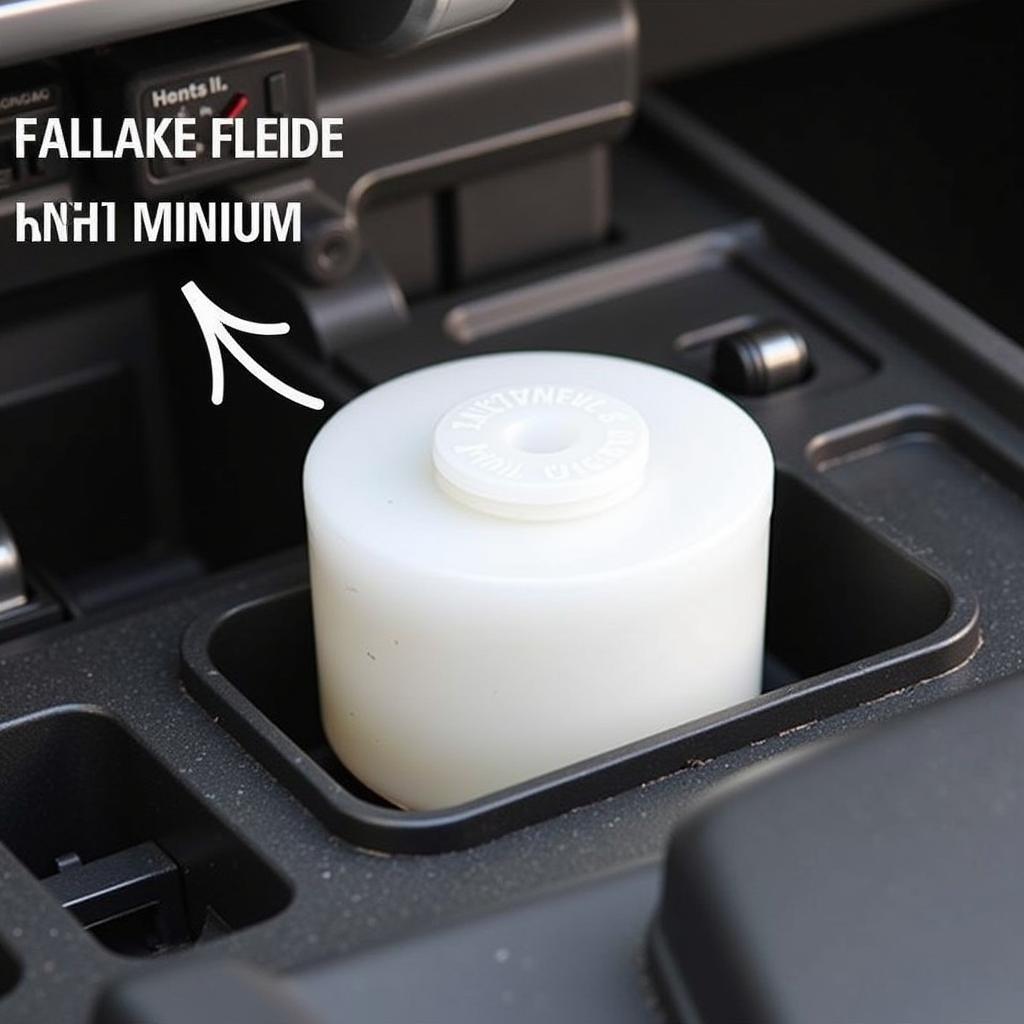The brake warning system is a critical safety feature in your vehicle, designed to alert you to potential issues with your brakes. It’s that insistent light on your dashboard that illuminates with a gentle “BRAKE” or a more alarming exclamation mark within a circle. Ignoring this warning could be dangerous, potentially leading to brake failure and accidents. This comprehensive guide delves into the intricacies of the brake warning system, empowering you with the knowledge to address this crucial aspect of your car’s safety.
Decoding the Brake Warning Light
The brake warning light is your car’s way of communicating a problem within the braking system. When this light comes on, it doesn’t necessarily mean your brakes are about to fail, but it does warrant immediate attention.
Common Reasons Your Brake Warning Light Is On:
- Low Brake Fluid: This is the most common culprit. Brake fluid is the lifeblood of your braking system, transmitting force from the brake pedal to the wheels. A leak in the system can lead to a drop in fluid level, triggering the warning light.
- Worn Brake Pads: Brake pads are designed to wear down over time. When they become too thin, the brake warning light serves as a reminder to replace them.
- Faulty Brake Sensor: Modern vehicles have sensors that monitor various components of the braking system, including brake pad wear and fluid level. A malfunctioning sensor can trigger a false warning light.
- Problems with the ABS (Anti-lock Braking System): The ABS prevents your wheels from locking up during hard braking. If there’s an issue with the ABS, the brake warning light might illuminate along with the ABS warning light.
- Parking Brake Engaged: Sometimes, the simplest explanation is the most likely one. If you’ve left your parking brake partially engaged, the brake warning light will remind you to release it.
Troubleshooting Brake Warning System Issues
While it’s always recommended to consult a qualified mechanic for brake-related issues, here are some basic troubleshooting steps you can take:
- Check Your Parking Brake: Ensure your parking brake is fully released.
- Inspect Brake Fluid Level: Locate the brake fluid reservoir under the hood and check the fluid level. If it’s low, add the recommended brake fluid type specified in your owner’s manual.
- Examine Brake Pads: If you’re comfortable with basic car maintenance, visually inspect your brake pads for wear. If they appear thin or worn, it’s time for a replacement.
The Importance of Timely Diagnosis and Repair
Ignoring a brake warning light can have serious consequences. Driving with faulty brakes increases the risk of accidents and compromises your safety and that of other road users.
“Addressing brake system issues promptly is non-negotiable,” says automotive engineer Emily Carter. “A minor problem, if left unattended, can escalate into a major safety hazard.”
When to Seek Professional Help
If the brake warning light remains illuminated after basic troubleshooting or you notice any unusual noises or sensations when braking, it’s crucial to seek professional assistance immediately.
hybrid-system-warning-check-brake
Advanced Brake Warning Systems
Modern vehicles often come equipped with advanced brake warning systems that offer additional safety features:
- Electronic Brake-force Distribution (EBD): EBD optimizes braking force between the front and rear wheels, enhancing stability during braking.
- Brake Assist (BA): BA senses emergency braking situations and automatically applies maximum braking force if the driver hasn’t already done so.
- Autonomous Emergency Braking (AEB): AEB uses sensors to detect potential collisions and can automatically apply the brakes to avoid or mitigate an accident.
Aftermarket Brake Warning Systems
For older vehicles or those without advanced safety features, aftermarket brake warning systems are available. These systems can provide an extra layer of safety by monitoring brake performance and alerting the driver to potential issues.
aftermarket auto brake warning systems
Maintaining Your Brake Warning System
Regular maintenance is crucial to ensure your brake warning system functions correctly. During routine servicing, your mechanic will inspect the entire braking system, including:
- Brake fluid level and condition
- Brake pad wear
- Brake rotors for wear and damage
- Brake lines and hoses for leaks or damage
- Brake sensors for proper operation
brake system warning light define
Conclusion
The brake warning system is a vital safety feature in your vehicle that should never be ignored. Understanding its function and heeding its warnings can help prevent accidents and ensure your safety on the road. Regular maintenance and timely repairs are essential to keep this critical system in optimal working order. Remember, when it comes to brakes, prevention is always better than cure.

